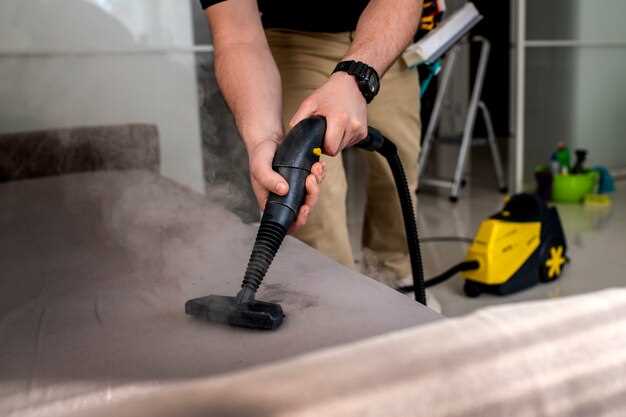
Leather car seats provide a luxurious and comfortable driving experience; however, they require proper maintenance to ensure they remain in pristine condition. Regular cleaning and care not only enhance the aesthetic appeal of your vehicle but also extend the lifespan of the leather upholstery. Understanding the unique characteristics of leather is crucial for effective cleaning and upkeep.
Unlike cloth seats, leather can be sensitive to harsh chemicals and excessive moisture. To maintain its supple texture and appearance, it is essential to use cleaning products specifically designed for leather. This article will provide practical tips and techniques for cleaning and maintaining leather car seats, ensuring that your investment continues to look great for years to come.
From basic cleaning routines to advanced conditioning treatments, we’ll explore various strategies to protect your leather seats from wear and tear. Implementing these practices not only preserves the beauty of your car’s interior but also helps to retain its resale value. Let’s delve into the best practices for keeping leather car seats looking fresh and new.
Choosing the Right Cleaning Products for Leather
When it comes to maintaining leather car seats, selecting the appropriate cleaning products is crucial for preserving their appearance and extending their lifespan. Leather is a natural material that requires specific care to prevent damage and wear.
First, consider using a pH-balanced cleaner. This type of cleaner is specifically designed for leather and will not strip away essential oils, which keep the material supple. Avoid harsh chemicals or all-purpose cleaners that can lead to discoloration or cracks in the leather.
Additionally, look for products that contain conditioners. These help nourish the leather, preventing it from drying out and maintaining its natural sheen. Regular conditioning is essential for car seats to avoid premature aging.
It is also advisable to use a microfiber cloth when applying these products. Microfiber is gentle on leather and helps to avoid scratches while effectively lifting dirt and grime. Always test the product on a discreet area before applying it to the entire seat.
Furthermore, consider the specific type of leather used in your vehicle. Some manufacturers recommend particular products suited to their leather types, so always check the vehicle’s manual or guidelines before cleaning.
In summary, the right cleaning products contribute significantly to the maintenance of leather car seats. By choosing pH-balanced cleaners with conditioners and using appropriate application tools, you can ensure your seats remain in excellent condition for years to come.
Step-by-Step Guide to Cleaning Stains from Leather Seats
Leather car seats add elegance to your vehicle, but they require proper maintenance to keep them looking their best. Stains can detract from their appearance, so it’s essential to address them promptly. Here’s a simple step-by-step guide to help you clean stains from leather seats effectively.
Step 1: Gather Your Materials
Before you start, assemble the necessary cleaning supplies. You will need a soft cloth, mild soap or leather cleaner, a damp sponge, and a leather conditioner. These materials ensure that you clean the seats without causing damage.
Step 2: Test the Cleaner
Choose a small, inconspicuous area of the leather seat to test your chosen cleaner. Apply a small amount and gently rub it in with a soft cloth. Wait for a few minutes to ensure there is no discoloration or damage before proceeding.
Step 3: Apply the Cleaner
Once you have confirmed that the cleaner is safe, dampen a soft cloth with the cleaning solution. Gently wipe the stained area in a circular motion. Avoid using excess liquid, as this can saturate the leather and lead to damage. For tougher stains, you may need to apply a little more pressure.
Step 4: Rinse the Area
After cleaning the stain, use a damp sponge to wipe away any remaining cleaner. This step is crucial to prevent residue buildup, which can dry out the leather over time. Make sure the sponge is not excessively wet, as too much moisture can harm the leather.
Step 5: Dry the Surface
Using a dry, soft cloth, gently blot the cleaned area to remove moisture. Avoid rubbing, as this can disturb the leather’s texture. Allow the seats to air dry completely before using the vehicle.
Step 6: Condition the Leather
Once the seats are dry, apply a leather conditioner to restore moisture and protect the surface. This step is vital for maintaining the integrity of the leather and preventing future stains. Follow the manufacturer’s instructions for application for optimal results.
By following these steps, you can effectively clean stains from leather seats and maintain their appearance. Regular maintenance will help prolong the life of your leather upholstery, keeping it looking luxurious for years to come.
How to Properly Condition Leather to Prevent Cracking

Proper maintenance of leather car seats is essential to extend their lifespan and preserve their appearance. Conditioning leather helps to keep it hydrated and supple, preventing cracking and wear over time. Here are steps and tips on how to effectively condition leather.
-
Choose the Right Conditioner:
- Select a high-quality leather conditioner specifically designed for automotive use.
- Avoid products with harsh chemicals, as they can damage the leather’s natural oils.
- Consider conditioners that contain lanolin or beeswax for added protection.
-
Clean the Leather:
- Before conditioning, clean the leather with a soft, damp cloth to remove dirt and dust.
- Use a pH-balanced leather cleaner for more thorough cleaning without stripping natural oils.
- Allow the leather to dry completely before applying the conditioner.
-
Apply the Conditioner:
- Use a clean, soft cloth or applicator pad for an even application.
- Apply the conditioner in small sections, using circular motions to work it into the leather.
- Follow the manufacturer’s instructions regarding the amount of product to use.
-
Let it Absorb:
- Allow the conditioner to sit on the surface for the recommended time–usually about 15-30 minutes.
- Avoid wiping it off immediately to ensure maximum absorption of the product.
-
Buff the Surface:
- After the conditioner has absorbed, use a clean cloth to gently buff the leather.
- This will enhance the shine and remove any excess product, ensuring a smooth finish.
Regular conditioning, typically every 3-6 months, will help maintain leather’s moisture balance and prevent cracking. Proper maintenance of leather car seats not only enhances comfort but also contributes to the vehicle’s overall aesthetic and resale value.
Best Techniques for Removing Odors from Leather Interiors
Removing odors from leather car seats can be challenging, but with the right techniques, you can refresh your leather interiors effectively. Here are some of the best methods to eliminate unwanted smells:
| Technique | Description |
|---|---|
| Baking Soda | Sprinkle baking soda over the leather seats and let it sit overnight. Baking soda is a natural odor absorber that fights unpleasant smells. |
| Vinegar Solution | Create a mixture of equal parts water and white vinegar. Using a soft cloth, gently wipe the leather surfaces. This solution helps neutralize odors. |
| Activated Charcoal | Place activated charcoal bags within your car’s interior. These bags effectively absorb odors over time, leaving your leather seats smelling fresh. |
| Essential Oils | Mix a few drops of essential oil with water in a spray bottle. Lightly mist the leather seats, avoiding soaking. Scents like lavender or lemon can replace unpleasant smells. |
| Leather Conditioner | Regularly using a leather conditioner can help maintain the material’s quality and create a barrier against odors. Apply as directed to keep your seats in optimal condition. |
By employing these techniques, you can effectively eliminate odors from your leather car interiors, ensuring a pleasant driving experience.
Routine Maintenance Practices to Extend Leather Lifespan
To ensure the longevity of your leather car seats, establishing a regular maintenance routine is essential. Start by cleaning the seats monthly using a soft cloth and a gentle leather cleaner specifically designed for automotive use. This helps remove dirt and oils that can accumulate over time and compromise the leather’s integrity.
Next, consider applying a high-quality leather conditioner every three to six months. This not only keeps the seats supple and prevents cracking but also adds a protective barrier against moisture and spills. When applying conditioner, use a clean microfiber cloth and follow the manufacturer’s instructions for best results.
Additionally, always address spills immediately. Blot, rather than rub, the area with a soft cloth to absorb excess liquid without damaging the leather surface. If necessary, use a mild soap solution for cleaning, but ensure that the leather is thoroughly dried afterward to prevent mold growth.
Avoid exposing your leather seats to direct sunlight for extended periods, as UV rays can cause fading and drying. Whenever possible, park in shaded areas or use sunshades to mitigate damage. Furthermore, keep the interior climate controlled to reduce extreme temperature fluctuations that can harm the leather.
Regularly vacuum the seats to remove debris and prevent dirt particles from embedding into the leather. Pay attention to seams and crevices, as they can trap grime. For thorough cleaning, make sure to use a vacuum attachment with a soft brush to avoid scratches.
By following these routine maintenance practices, you can significantly extend the lifespan of your leather car seats while keeping them looking luxurious and well-preserved.
Signs Your Leather Seats Need Professional Care

Regular maintenance is essential for preserving the quality of leather seats. However, there are specific signs that indicate your leather seats require professional attention. If you notice any of the following issues, it may be time to seek expert help.
Firstly, visible cracks or splits in the leather surface are a clear indication that the material is drying out. Leather that is not properly conditioned can become brittle, leading to significant damage. A professional can assess the extent of the damage and provide restoration services.
Secondly, deep stains that ordinary cleaning methods cannot remove may signal the need for professional care. Leather is porous, and substances like ink, food, or grease can penetrate the surface and require specialized cleaning solutions and techniques to eliminate.
Another sign includes persistent odors trapped in the leather. These smells can come from spills, pets, or smoke, and often require deep cleaning and deodorization by a trained expert to effectively eradicate them.
Fading color or uneven patches on the leather can also suggest that your seats need professional attention. This might result from sun exposure or age and can be rectified through rejuvenation processes that restore the leather’s original vibrancy.
Lastly, if you notice a significant amount of wear in high-contact areas, such as the side bolsters or seating surfaces, it may be time for expert intervention. Professionals can professionally repair these areas, reinforcing and revitalizing the leather to extend its lifespan.
